
The 10 Best Alternatives to Loggly
The 10 Best Alternatives to Loggly
Managing logs efficiently is critical for IT systems. Whether you need real-time monitoring, long-term storage, or compliance with regulations, choosing the right log management tool can make a huge difference. Below are 10 alternatives to Loggly, each offering unique features to meet various needs:
- LogCentral: Proactive alerting, GDPR compliance, and Cisco Meraki integration. Plans start at $16.50/month.
- Splunk: Advanced search, customizable dashboards, and extensive integrations for large-scale IT systems.
- Datadog: Real-time monitoring, infrastructure mapping, and hundreds of integrations.
- ELK Stack: Open-source solution with Elasticsearch, Logstash, and Kibana for real-time log analysis.
- Papertrail: Unified log management with fast search, team access, and long-term archiving.
- Graylog: Open-source platform with customizable dashboards and advanced search options.
- Sumo Logic: Cloud-based analytics with real-time dashboards and anomaly detection.
- Logz.io: AI-powered insights, cost management, and strong security features.
- New Relic: All-in-one monitoring with Kubernetes support and synthetic user testing.
- Humio: Real-time log processing with efficient storage and flexible deployment options.
Quick Comparison
| Tool | Key Features | Starting Price | Ideal For |
|---|---|---|---|
| LogCentral | Proactive alerts, GDPR compliance | $16.50/month | Compliance-focused teams |
| Splunk | Advanced analytics, integrations | Custom pricing | Large-scale IT operations |
| Datadog | Real-time monitoring, integrations | Custom pricing | Comprehensive infrastructure |
| ELK Stack | Open-source, real-time analysis | Free/self-hosted | Cost-conscious organizations |
| Papertrail | Fast search, team collaboration | Free plan available | Small to medium teams |
| Graylog | Open-source, advanced search | Free/self-hosted | Smaller projects |
| Sumo Logic | Cloud-based analytics, dashboards | Custom pricing | Cloud-first businesses |
| Logz.io | AI insights, cost reduction | Custom pricing | Data-driven teams |
| New Relic | Kubernetes monitoring, tracing | Custom pricing | DevOps and app performance |
| Humio | Real-time processing, flexible setup | Custom pricing | High-volume data environments |
Key Takeaway: Each tool offers unique benefits depending on your priorities like scalability, cost, security, or integration. Explore free trials to find the best fit for your IT needs.
1. LogCentral
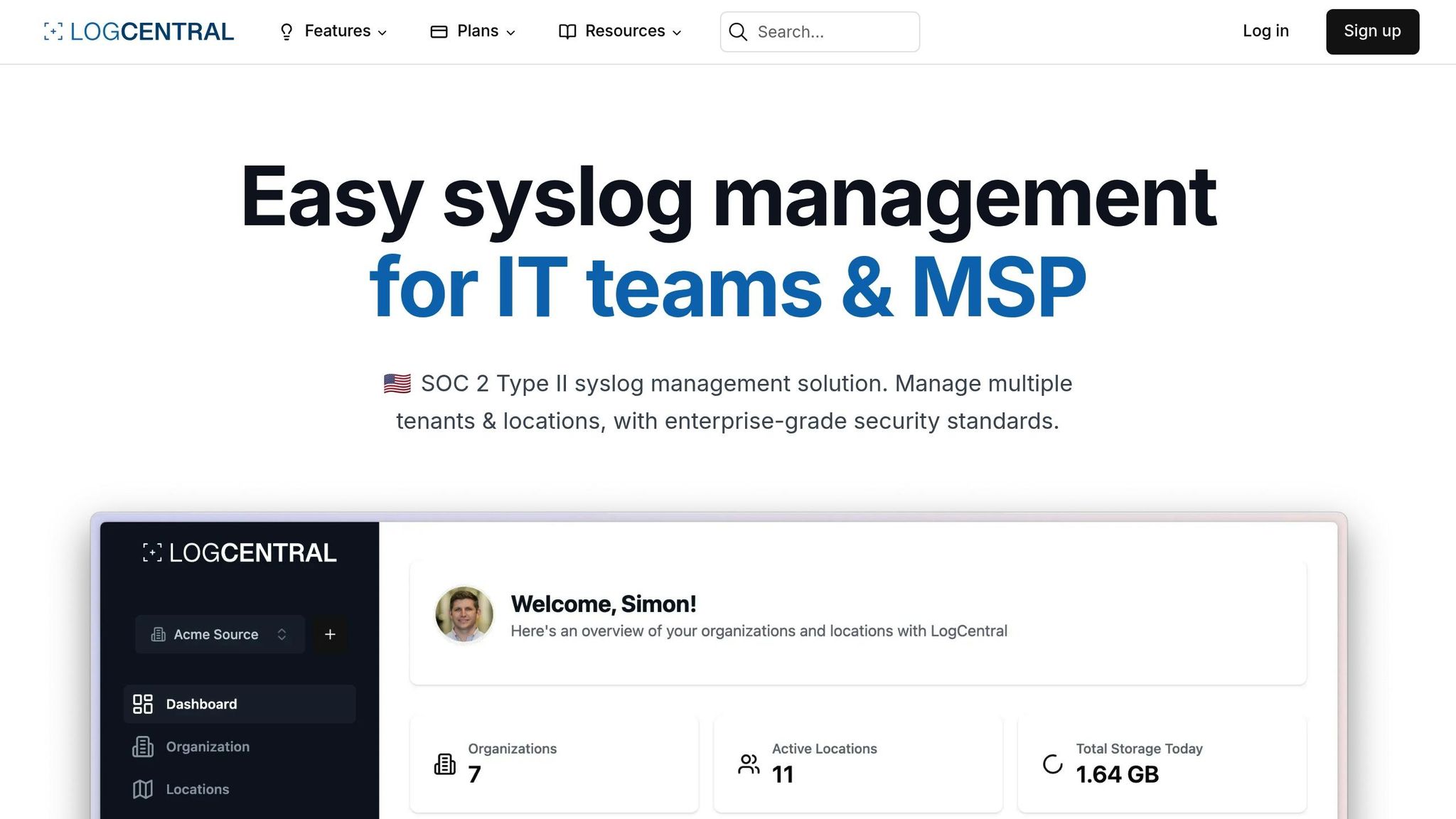
LogCentral is a log management tool designed to support modern IT systems with enterprise-grade capabilities. Here's a closer look at its key features.
With a one-year retention policy[5], LogCentral ensures access to historical data for compliance, troubleshooting, and audit purposes.
The platform includes intelligent alerting for proactive monitoring across multiple channels. As LogCentral puts it:
"Stay informed with smart notifications and customizable alerts for your infrastructure events"[1]
It also supports custom IPv4 and IPv6 firewall rules for each syslog server instance[6], adding an extra layer of security.
For organizations focused on safeguarding data, LogCentral complies with GDPR standards through various security measures:
| Security Feature | Details |
|---|---|
| Data Protection | Personal data is encrypted |
| Access Control | Role-based authentication ensures secure access |
| Security Testing | Systems undergo regular evaluations |
| Monitoring | 24/7 infrastructure monitoring |
| Backup Systems | Frequent data backups are performed |
Pricing options include the Light plan at $16.50/month (250 MB/day), the Business plan at $82.50/month (1 GB/day), and the Enterprise plan at $275/month (10 GB/day)[8]. All plans come with centralized management and secure storage.
LogCentral also integrates seamlessly with Cisco Meraki devices[7], making log collection and analysis easier for enterprise users. Its user management system offers granular control through role-based access, ensuring secure and efficient collaboration.
In case of a personal data breach, LogCentral commits to notifying the appropriate supervisory authority within 72 hours of detection[2], highlighting its dedication to transparency and trust.
2. Splunk
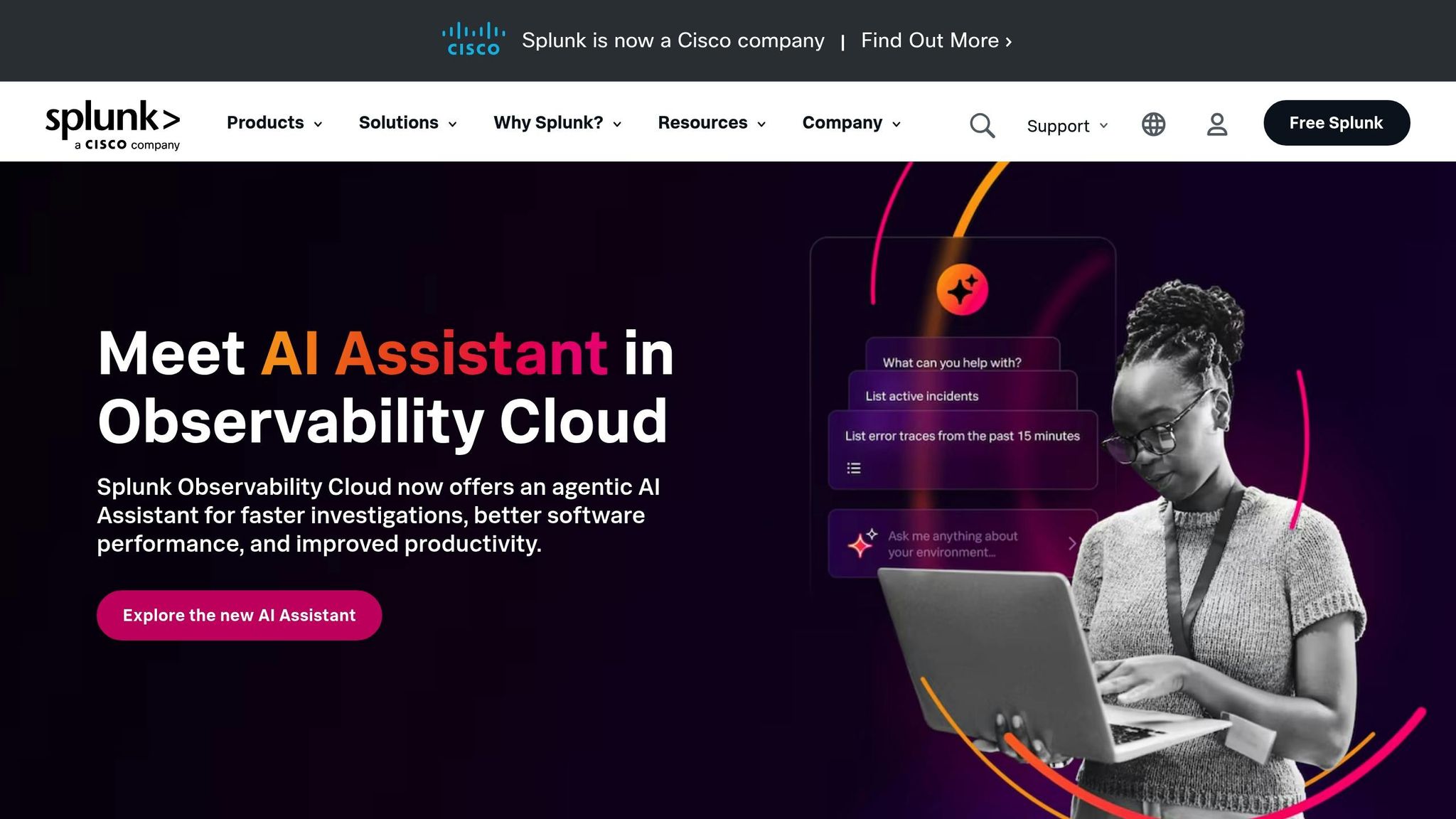
Splunk is another top-tier option for enterprise log management, especially suited for large-scale IT operations. It stands out for its ability to handle complex infrastructures with ease.
Powerful Search and Analytics
Splunk offers a feature-rich toolkit that includes advanced search, filtering, indexing, and reporting capabilities[3]. Its distributed tracing system is particularly effective at tracking events, identifying failures, and analyzing performance across intricate systems.
Customizable Dashboards
Splunk provides highly flexible dashboards that can be tailored to meet specific monitoring needs. These dashboards are easy to use and enhance the platform's overall functionality, making it a favorite among users[3].
High User Approval
A notable 83.5% of users recommend Splunk for its performance and usability[4].
Extensive Integration Options
Splunk supports a wide range of integrations to expand its functionality:
| Integration Type | Features |
|---|---|
| Development Tools | GitHub, Heroku |
| Storage Solutions | S3 backup |
| Project Management | JIRA |
| Monitoring | Live logging |
| Enterprise Systems | Cost management |
| Workflow | Approval system |
Splunk is particularly effective for short-term log analysis, offering quick search results for recent data. It also handles infrastructures with over 200,000 devices, backed by advanced monitoring and workflow systems[3][4].
3. Datadog
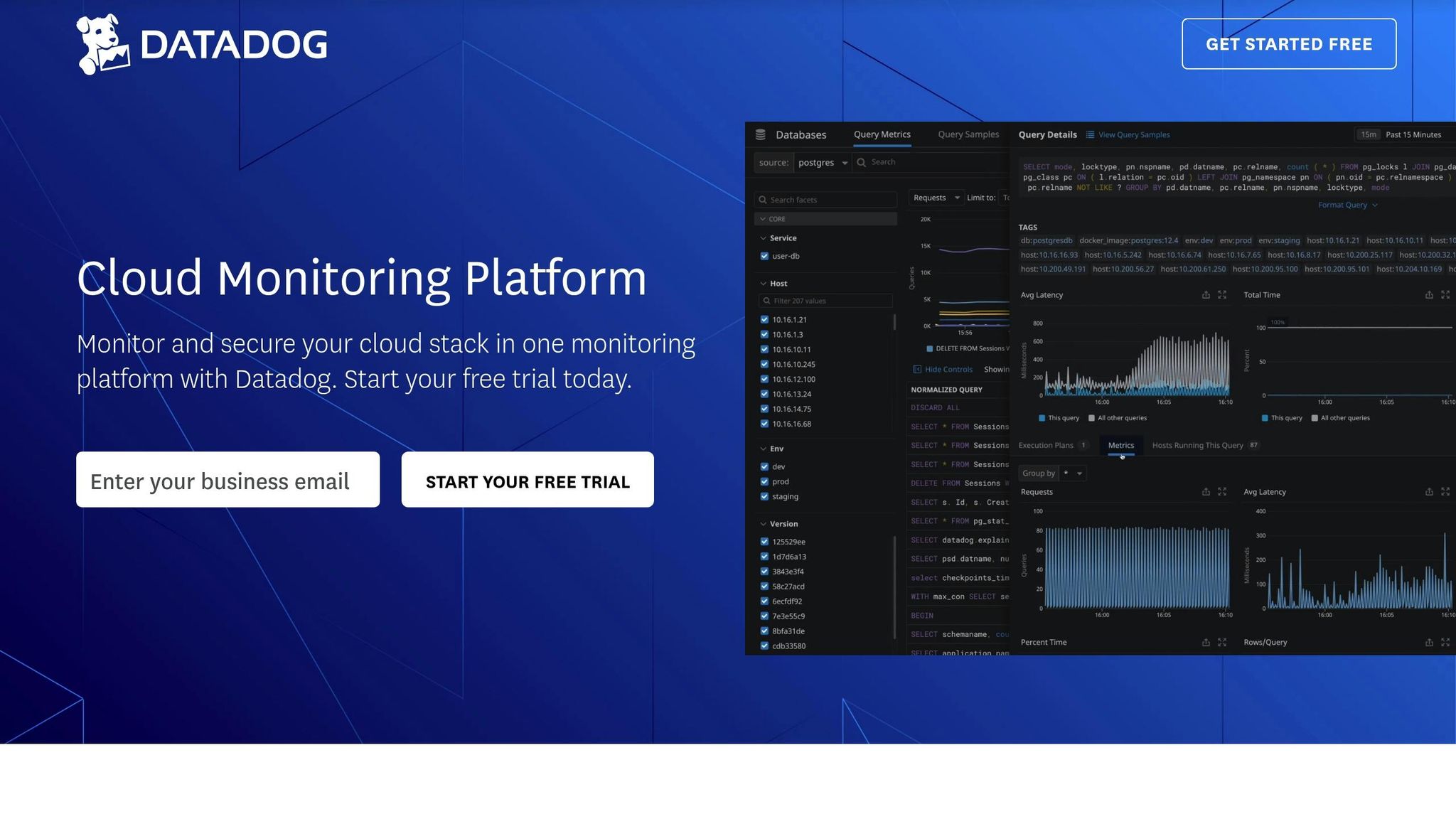
Datadog provides a robust solution for managing logs and monitoring IT infrastructures, making it a strong choice for organizations looking to gain in-depth visibility into their systems.
Log Management Tools
Datadog simplifies log handling by automatically processing JSON logs and offering customization through its Grok Parser. It supports a variety of log formats, ensuring adaptability across different operational scenarios:
| Log Format | Purpose |
|---|---|
| MySQL Logs | Monitor database performance |
| Windows Event Logs | Track system events |
| W3C Log Formats | Analyze web server activity |
| JSON Logs | Parse structured data |
| IIS Log Files | Uncover patterns in server logs |
Infrastructure Mapping and Analysis
The platform delivers clear visualizations of your infrastructure using tools like host maps, anomaly detection, forecast monitoring, and interactive notebooks.
Real-time Monitoring
Datadog optimizes log monitoring by separating log ingestion from indexing, ensuring efficient processing. You can search logs using parameters such as:
- Specific date ranges
- IP addresses
- Custom filters
- Metrics tailored to your system
Extensive Integrations
With hundreds of built-in integrations [3], Datadog connects effortlessly to development tools, monitoring solutions, and communication platforms. These integrations enhance the platform's ability to refine log data and improve analysis.
Search and Analysis Tools
Datadog’s advanced search features make it easy to spot trends and patterns in log data, helping organizations fine-tune their infrastructure and address potential issues quickly.
4. ELK Stack
The ELK Stack is a powerful option for real-time log analysis, combining three open-source tools: Elasticsearch, Logstash, and Kibana. Together, they create a complete log management system.
Core Components and Workflow
Here's how the ELK Stack works as a data pipeline:
| Component | Function | Key Role |
|---|---|---|
| Logstash | Data Collection | Handles Extract, Transform & Load (ETL) processes |
| Elasticsearch | Data Storage & Search | Provides fast data indexing and search |
| Kibana | Visualization | Offers interactive dashboards and analytics tools |
This integration allows for efficient log collection, storage, and visualization, making it a reliable choice for managing log data.
Data Processing Architecture
Logstash gathers and processes log data, then sends it to Elasticsearch for indexing [4]. This setup is designed to handle large volumes of log data while ensuring quick and effective searches.
Deployment Considerations
If you're considering the ELK Stack, it's important to evaluate your deployment environment. Self-hosted setups, in particular, come with specific challenges:
- Infrastructure Management: Requires dedicated resources for maintenance.
- Scaling Complexity: Scaling up can lead to increased costs.
- Compliance Needs: You'll need to implement your own security and compliance measures.
For businesses that need additional features, hosted solutions can simplify the process. These options often include role-based access controls, automated compliance tools, professional maintenance, and easier scaling.
Search and Analysis Features
Elasticsearch provides robust tools for managing and analyzing log data, including:
- Real-time log analysis
- Full-text search
- Advanced query options
- Pattern recognition
- Anomaly detection
With these capabilities, the ELK Stack can handle everything from basic log management to in-depth analytics, offering detailed insights into your system's operations.
5. Papertrail
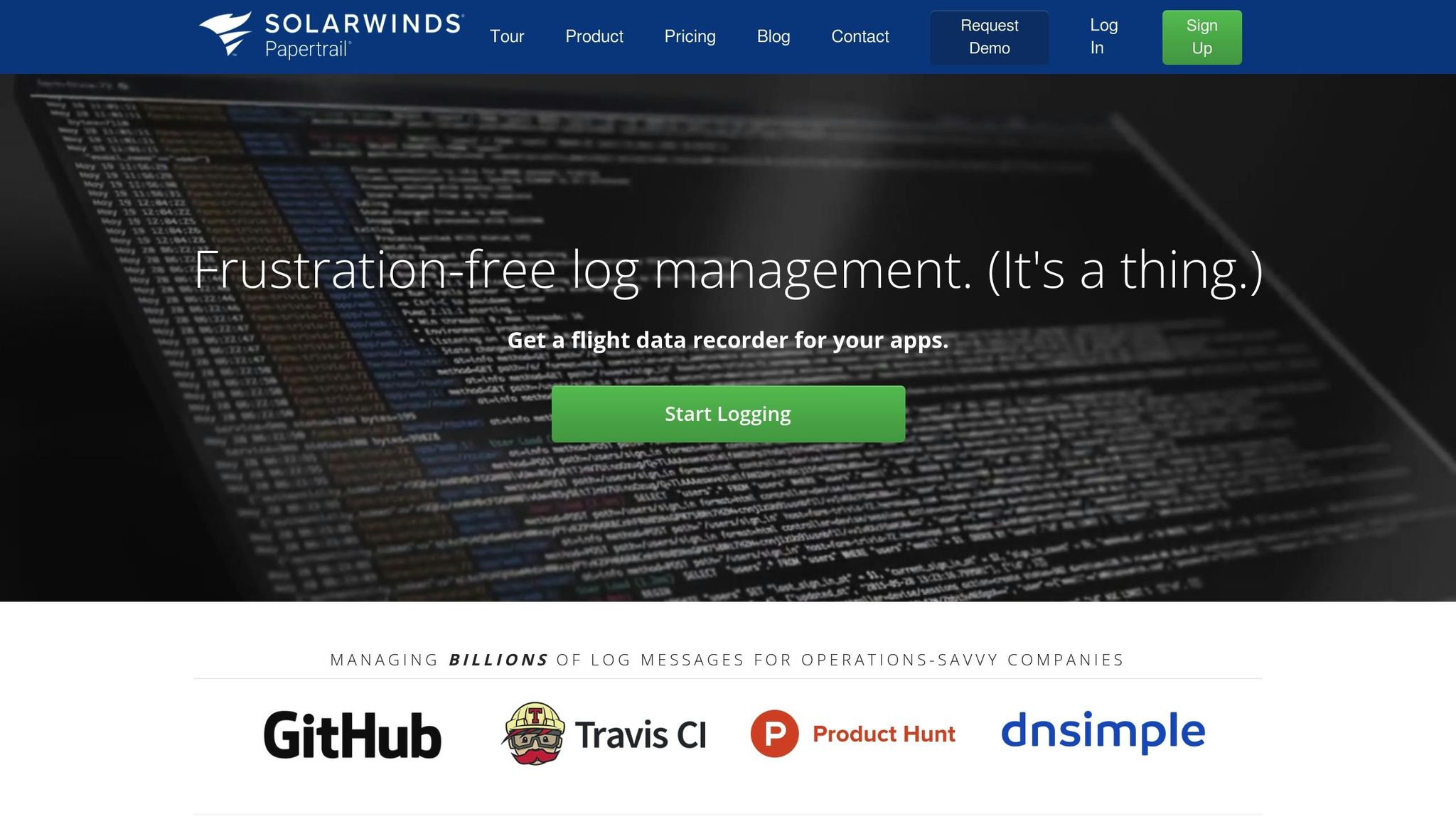
Papertrail brings together various log types - like application logs, text logs, and Syslogs - into one searchable platform. This unified approach simplifies log analysis, meeting the needs of modern IT teams.
Key Features
Papertrail offers a range of tools to make log management easier:
- Fast Search: Enables real-time troubleshooting.
- Team Access: Allows collaborative work with shared dashboards and permissions.
- Long-term Archiving: Stores historical data efficiently in compressed TSV format.
- Remote Syslog: Centralizes logging with automated log aggregation.
- HTTP Webhooks: Provides flexible integrations with custom notifications and alerts.
Monitoring Tools
Papertrail includes real-time visualization and analysis tools, helping teams spot anomalies and performance trends quickly. Its design also ensures fast access to historical data for in-depth system reviews.
Data Management Features
- Archive Management: Supports API-based downloads for easy access.
- Message Analysis: Identifies duplicates and tracks log similarities.
- Trend Detection: Spots patterns and sends alerts for unusual activity.
User Experience and Support
Papertrail's focus on customer satisfaction is clear, with 90.9% of users recommending the platform [4]. The support team is known for being responsive and knowledgeable, making it a dependable choice for organizations that prioritize strong technical assistance.
Accessibility and Free Plan
Papertrail offers a free plan, letting teams explore its features without upfront costs. This allows organizations to test its capabilities and scalability before committing to a paid plan. Its robust archiving system is especially useful for compliance needs and long-term trend analysis. Next, we’ll look at another solution designed to improve log management efficiency.
6. Graylog
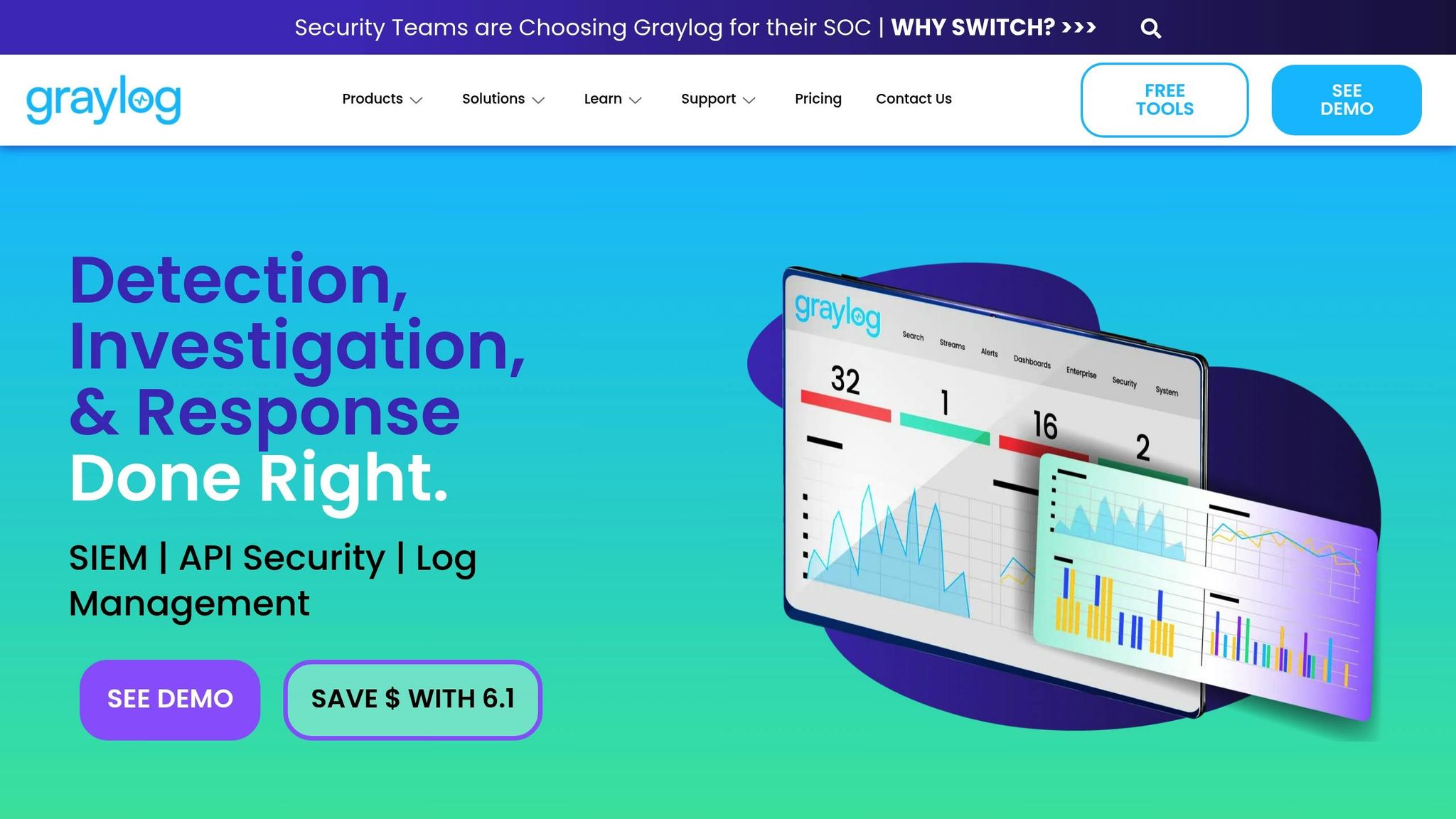
Graylog is an open-source log management platform built using Elasticsearch and MongoDB [3]. It's a great fit for smaller projects, offering effective log analysis while keeping costs down.
Core Capabilities
Graylog's dashboard uses widgets to create visualizations that can be customized. This makes it easier to monitor and analyze machine-generated data in real time.
Key Features
- Log Parsing for Any Source: Handles logs from virtually any data source [3].
- Advanced Search Options: Pinpoints errors without needing manual filtering [3].
- Two Editions Available:
- A free open-source version packed with features.
- A proprietary enterprise edition for larger-scale needs [4].
Infrastructure Management
Graylog’s setup gives organizations complete control over their logging data by requiring self-hosting [3]. This approach comes with several benefits:
| Aspect | Advantage |
|---|---|
| Data Control | Full control over log storage and retention |
| Customization | Highly configurable to meet specific needs |
| Cost Management | Keeps expenses low for smaller projects |
| Scalability | Can grow alongside organizational needs |
Search and Analysis Tools
Graylog streamlines the entire process of collecting, searching, analyzing, and setting alerts for machine-generated data [9]. It’s especially effective for managing high volumes of logs [9].
Why Choose Graylog?
Capterra reviews highlight Graylog’s broad range of features and affordability [4]. Its intuitive interface supports both quick troubleshooting and in-depth log analysis, making it a strong choice for organizations looking to handle complex log tasks efficiently.
Graylog’s architecture and tools make it a standout option as we dive deeper into other log management systems.
7. Sumo Logic
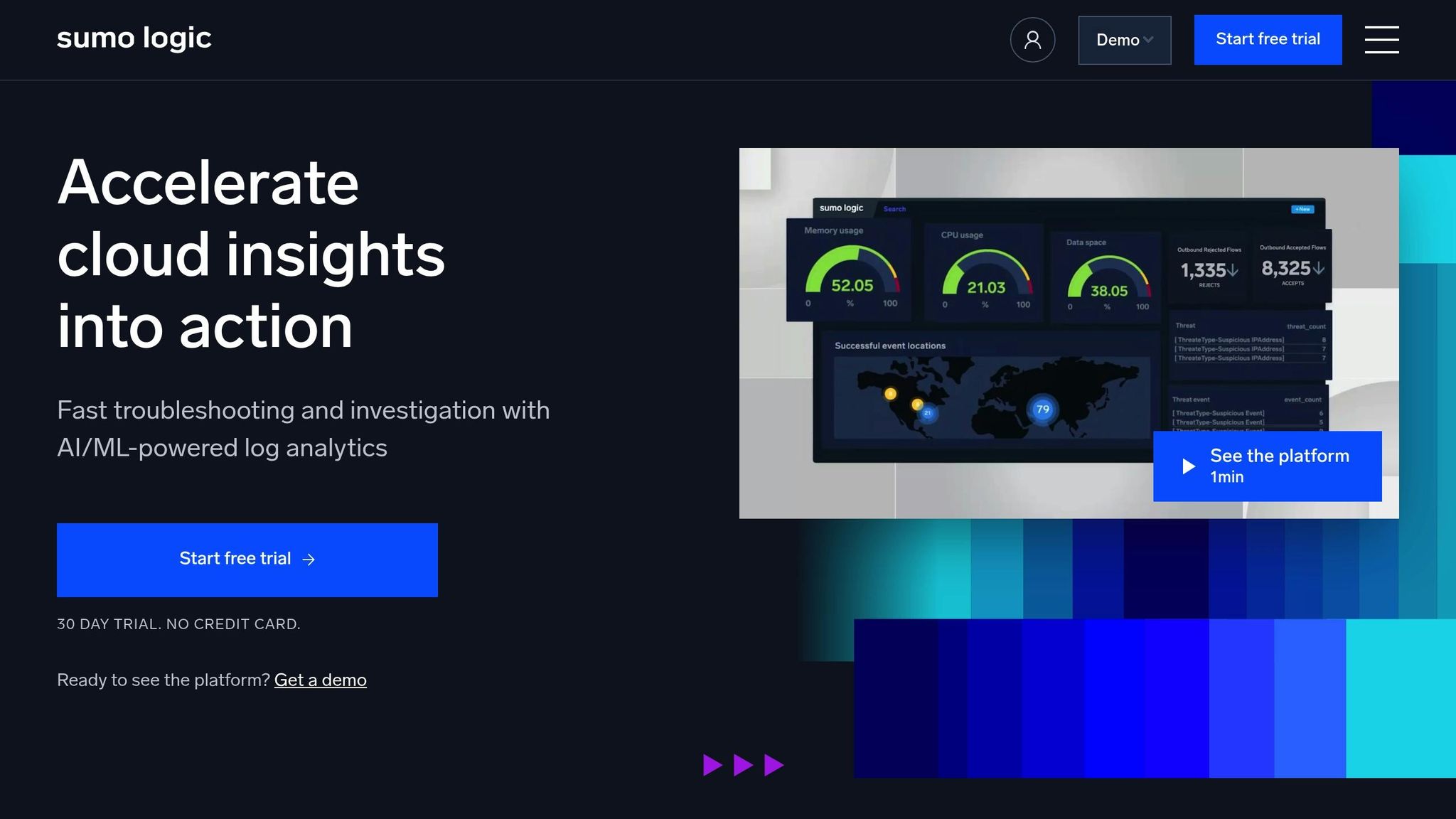
Sumo Logic, founded in 2010, is a cloud-based platform designed to simplify log management and machine data analytics. It offers tools that help businesses analyze data and monitor systems effectively.
Core Analytics Capabilities
The platform specializes in spotting patterns and detecting anomalies by grouping records, making it easier to uncover actionable insights.
Dashboard Options
Sumo Logic offers two types of dashboards tailored for different needs:
| Dashboard Type | Purpose | Benefits |
|---|---|---|
| Live Dashboard | Real-time monitoring | Tracks system status |
| Interactive Dashboard | Historical analysis | Identifies trends and events |
These dashboards are customizable and support seamless integration with cloud services.
Cloud Integration
The platform works smoothly with major cloud providers like Microsoft Azure, Amazon Web Services, and Google Cloud Platform. This ensures businesses can monitor performance and gain insights across various environments in real time.
Enterprise Features
Sumo Logic includes several advanced tools, such as:
- Incident management to address issues quickly
- Automated responses to streamline workflows
- Advanced analytics for deeper insights
Query Tools
Its powerful query language allows teams to:
- Schedule automated queries for regular monitoring
- Set up custom alerts based on specific conditions
- Generate detailed reports to meet compliance needs
Unified Infrastructure Monitoring
By combining metrics and log analysis, Sumo Logic gives a complete picture of system health. Its user-friendly interface makes navigating complex log data easier. Additionally, training and support resources are available to help organizations get the most out of the platform. This unified approach ensures secure and efficient log management.
8. Logz.io
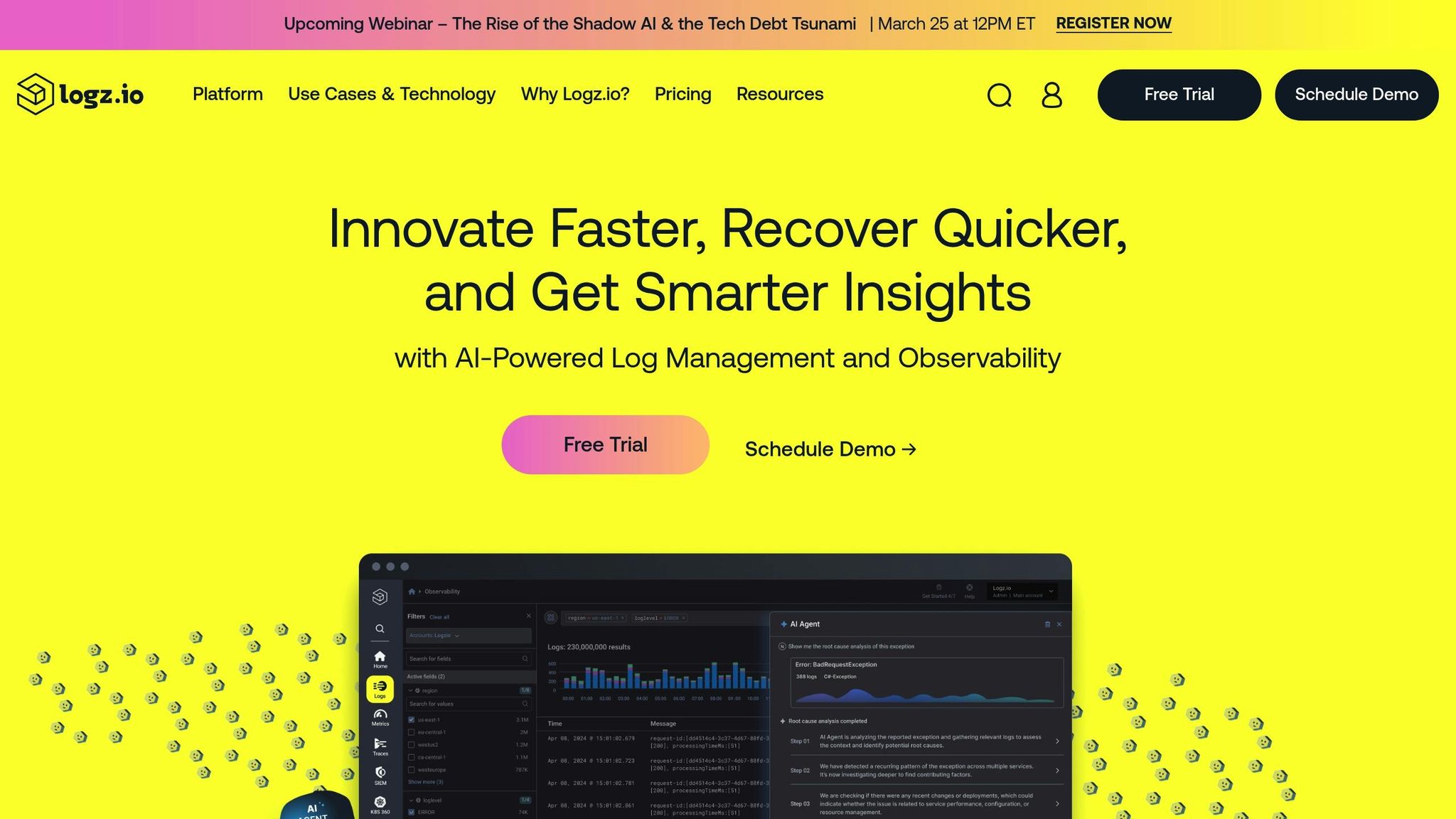
Logz.io brings together logs, metrics, and traces in one platform, helping teams resolve issues faster. It uses AI-powered insights and automation to simplify workflows and boost efficiency. This combination allows teams to dive into advanced analytics with ease.
AI-Powered Analytics
With smart automation and guided workflows, Logz.io helps teams identify root causes in no time. Snyk's VP of Engineering shared:
"Logz.io turned root cause analysis into a matter of minutes" [10]
Cost Management
The platform also helps reduce costs through its analytics tools. For example, Dish Network managed to cut its observability data by 62% using Logz.io's AI-driven cost management features [10].
Automated Workflows
Logz.io streamlines operations, freeing up teams to focus on what matters most. As The Economist's Head of DevOps explained:
"Before Logz.io, we were spending over 20% of our time managing our platform" [10]
Security and Integration
Security is a priority for Logz.io. It uses SSL and AES 256-bit encryption, real-time data streaming, and supports mapping from multiple data sources to ensure secure and efficient enterprise observability.
Enterprise Monitoring
Logz.io allows teams to shift their focus to core development tasks. A Site Reliability Engineer at ZipRecruiter noted how it improved their workflow:
"Logz.io frees us to focus on core product development" [10]
Key Features
Logz.io offers a range of tools to simplify observability and reduce operational challenges, including:
- Machine learning algorithms
- Crowdsourced insights
- Customizable alert systems
- Query-based monitoring
These tools empower organizations to maintain strong observability practices while minimizing complexity and focusing on growth.
9. New Relic
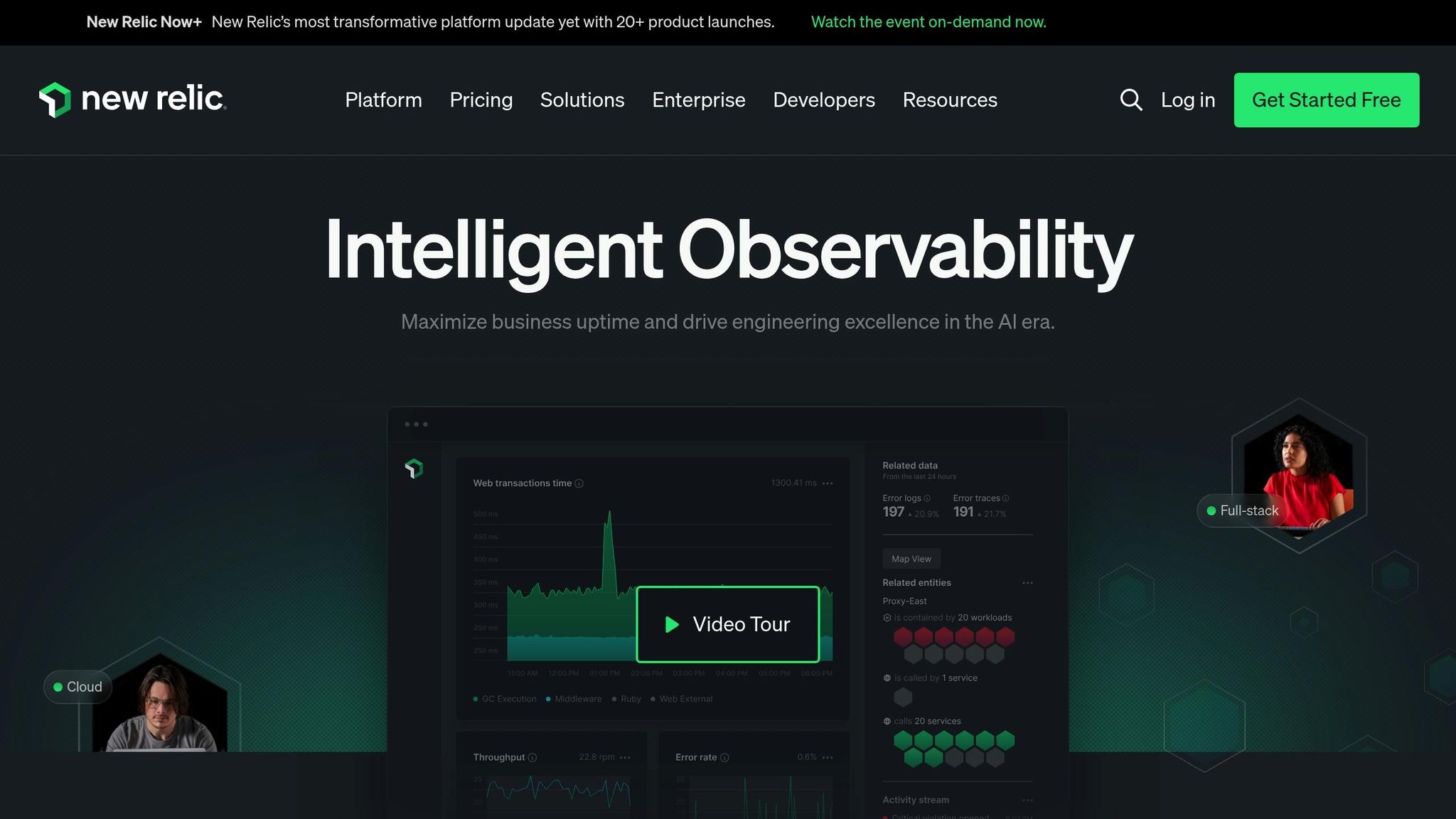
New Relic offers a powerful log management system that works seamlessly with major cloud providers.
Kubernetes Monitoring Made Easy
New Relic provides detailed Kubernetes monitoring, giving insight into container performance and cluster health. This helps quickly identify and fix issues. It doesn’t stop at containers - New Relic also monitors your entire infrastructure for a complete overview.
All-in-One Monitoring
New Relic combines several monitoring tools in one platform:
- Distributed Tracing: Track requests as they move across services.
- Real-time Observability: Keep an eye on systems instantly.
- Synthetic Monitoring: Test user interactions for potential problems.
- Open Data Collection: Handle data from various sources.
This integrated approach simplifies monitoring and helps manage performance more effectively.
Strong Application Integration
One of New Relic's standout features is its ability to link metrics directly to applications. This makes it easier to identify bottlenecks, track dependencies, and manage resources efficiently.
Simulated User Monitoring
With synthetic monitoring, New Relic mimics user behavior to detect issues before they affect real users. This proactive method helps prevent disruptions and ensures smoother performance.
10. Humio
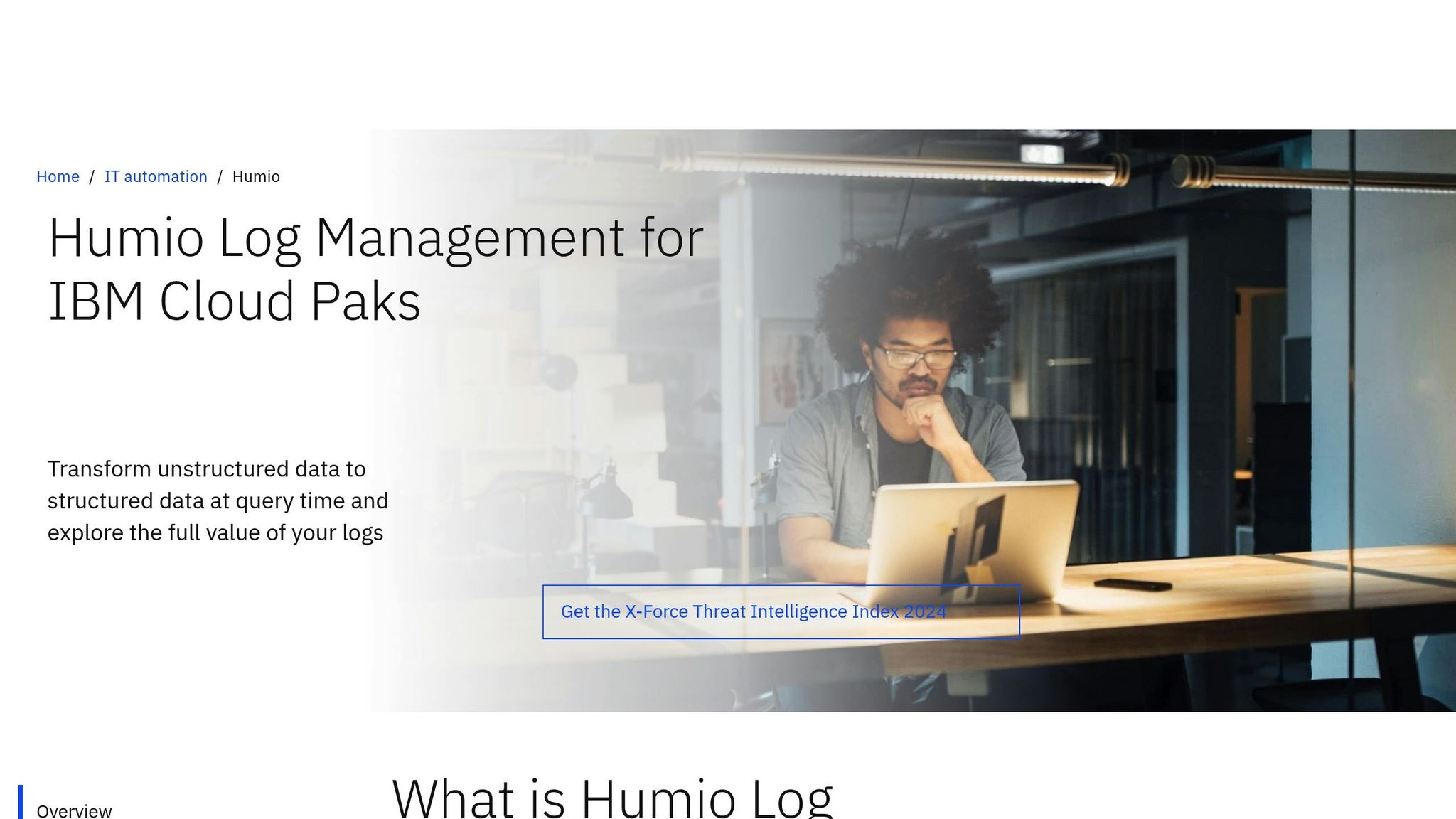
Humio is a log management tool designed to handle real-time data ingestion and analysis, especially in environments with high data volumes.
Real-Time Log Processing
Humio processes log data as it comes in, offering quick insights into system performance. It handles large amounts of data efficiently while maintaining fast query speeds.
Efficient Data Storage
The platform uses advanced data compression to manage storage costs. This allows users to retain more historical data without breaking the budget.
Advanced Search Features
Humio's search tools make log analysis easier. With dynamic queries and visualization options, users can spot trends over time and troubleshoot faster.
Strong Security Measures
Security is a priority with features like role-based access control, audit logging, and data encryption. These tools help protect sensitive log data.
Flexible Deployment Options
Humio works across different setups, whether you need it in the cloud, on-premises, or in a hybrid environment.
Automated Alerts
Humio's automated alert system notifies teams about critical issues in real-time. This ensures focus on important problems without being distracted by unnecessary alerts.
Feature Comparison
Efficient log management depends on critical features like retention, integration, security, and performance. While many platforms stick to basic 7-day retention, advanced options extend this up to 365 days, often with geo-redundant storage for added reliability.
Integration Capabilities
LogCentral has streamlined onboarding with its automatic provisioning for Cisco Meraki, cutting setup time from 4 hours to just 30 minutes. This improvement not only saves time but also increases client capacity and monthly revenue. Strong integrations like these often go hand in hand with high security standards.
Security and Compliance
Modern logging solutions prioritize security with features like:
| Security Feature | Details |
|---|---|
| Data Encryption | AES-256 for stored data, TLS 1.2+ for transit |
| Authentication | Multi-factor authentication (MFA) |
| Access Control | Role-based access control (RBAC) |
| Data Protection | Geo-redundant storage, 24/7 monitoring |
| Compliance | Certifications like ISO 27001, SOC 2 Type II, GDPR |
Data Protection and Privacy
Meeting GDPR requirements involves several key practices:
- Assigning a dedicated Data Protection Officer
- Implementing data minimization strategies
- Using secure data centers with physical isolation
- Employing biometric access controls
- Conducting continuous infrastructure monitoring
These measures ensure both privacy and the reliability of the underlying systems.
Infrastructure and Performance
Modern log management platforms focus on building strong infrastructure with features like:
| Feature Category | Capabilities |
|---|---|
| Monitoring | Around-the-clock system monitoring |
| Visualization | Real-time log analysis |
| Alert System | Smart alerting mechanisms |
| Access Management | User controls via RBAC |
| Network Security | Automatic firewall management |
| IP Management | Intelligent IP tracking and control |
This robust feature set allows organizations to effectively manage logs while meeting security and compliance standards.
Summary and Recommendations
When selecting a log management solution, focus on these critical aspects:
Storage and Retention
Ensure the platform supports long-term log retention to meet compliance and audit requirements. While some options only retain logs for 7 days, others offer extended storage periods of up to 365 days.
Cost Considerations
Compare pricing plans to find one that aligns with your usage. For example, prices range from $16.50/month for 250 MB/day to $275/month for 10 GB/day [8]. Additionally, confirm that the solution adheres to strict security and compliance standards.
Security and Compliance Framework
Your log management tool should include strong security features. Key components to look for:
| Security Component | Key Features |
|---|---|
| Data Protection | AES-256 encryption, TLS 1.2+ |
| Access Controls | Role-based access control (RBAC), multi-factor authentication (MFA) |
| Compliance | ISO 27001 and SOC 2 Type II certifications |
| Infrastructure | Round-the-clock monitoring and incident response |
Integration Capabilities
Opt for platforms that integrate seamlessly with your existing systems. Native integrations and guided setup processes can simplify deployment [7].
Data Privacy Focus
For GDPR compliance, prioritize solutions that:
- Limit data collection
- Offer secure hosting
- Implement role-based access
- Perform regular security assessments
Finally, take advantage of free trials to test how a platform performs in your specific environment before committing to a long-term solution.